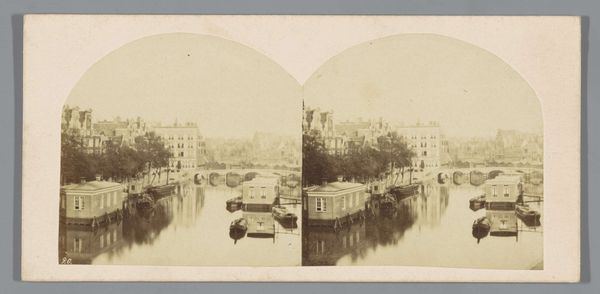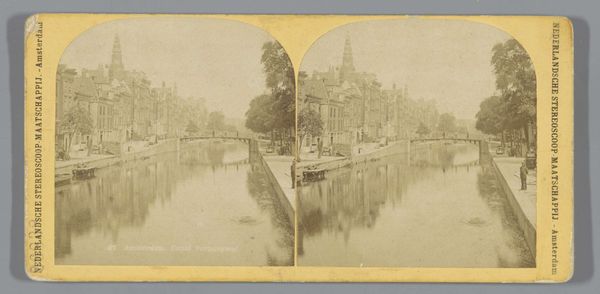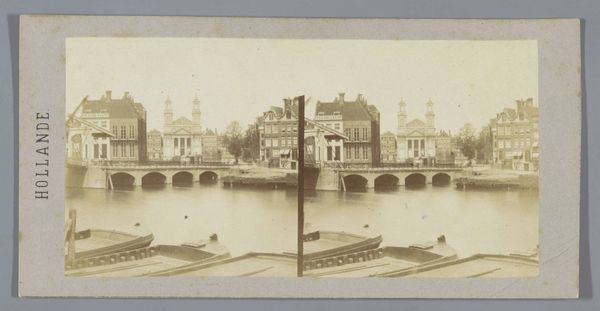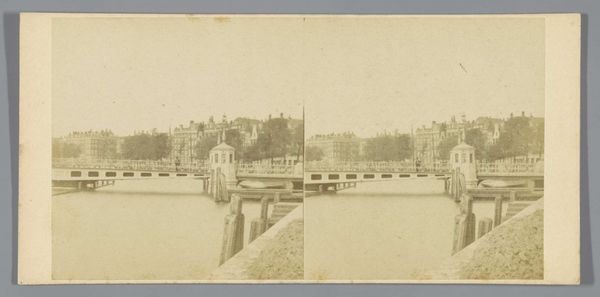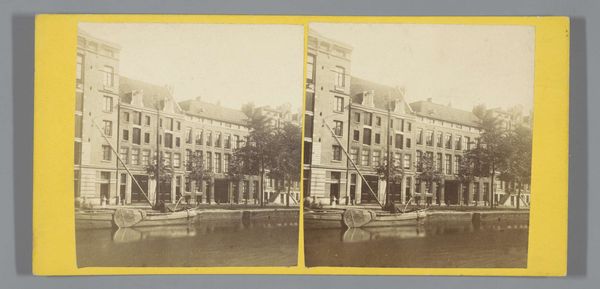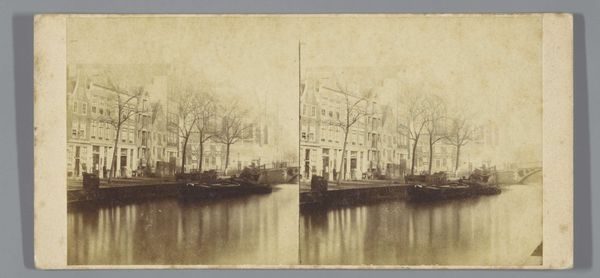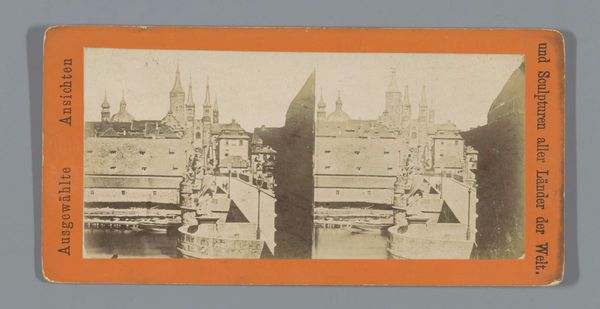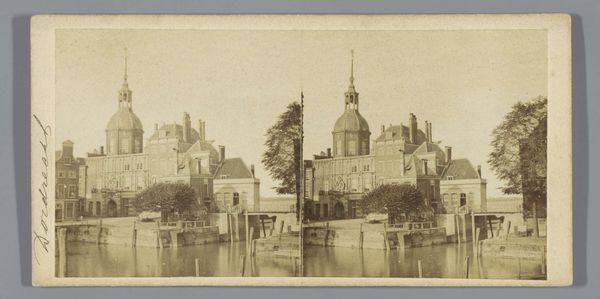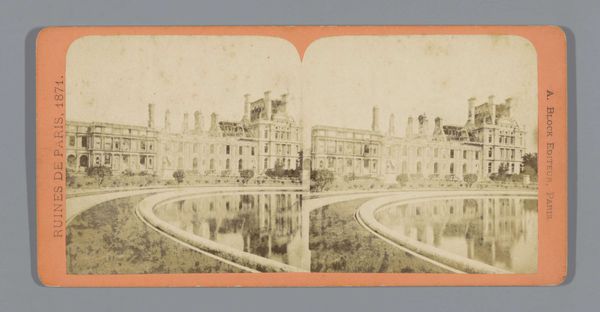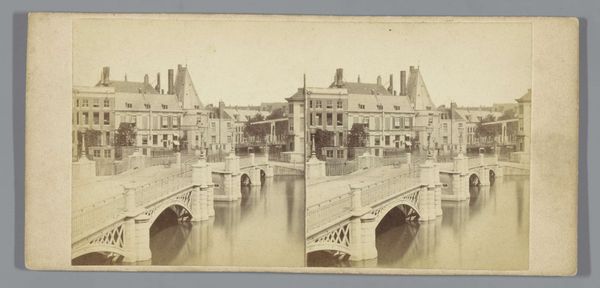
photography, gelatin-silver-print
#
photography
#
gelatin-silver-print
#
cityscape
#
realism
Dimensions: height 83 mm, width 175 mm
Copyright: Rijks Museum: Open Domain
Curator: Here we see Pieter Oosterhuis’s gelatin silver print "Westermarkt en de Westerhal, Amsterdam," dating to 1857. A captivating glimpse into the past, showcasing the Westermarkt and the Westerhal. Editor: My initial reaction is drawn to its melancholic quality, it’s quite stark and feels somewhat abandoned, though technically sharp. There is a beautiful clarity to the water reflecting the old buildings though. Curator: The composition highlights the architectural forms with what feels like deliberate starkness, inviting contemplation on the structures' role in shaping the socio-political landscape of Amsterdam at that time. I want to talk about visibility, which is what makes photography such an activist tool, especially for neglected landscapes or disempowered subjects. Editor: Visually, water has always been an allegory of change. Even this seemingly placid canal suggests how Amsterdam's relationship to global exchange defined its existence. The reflected building acts like an echo, an imprint of something enduring and resilient, mirroring the passage of time and memory, though also suggesting how it is an incomplete version. Curator: I see the photographic process itself in this image, highlighting its role in defining public consciousness of space, ownership and authority. Oosterhuis is claiming a right to represent these spaces that perhaps haven't been widely viewed, contributing to the emerging visual rhetoric of cityscapes. How is photography used or deployed to maintain the status quo or upend our ideas of reality? Editor: And what about that building itself? In its architectural details—its imposing scale, its windowed facade—it conveys civic power and a distinct sense of cultural identity rooted in both Dutch tradition and perhaps a statement about Amsterdam's place in an emerging European aesthetic. Curator: This approach offers viewers a crucial entry point to exploring 19th century society and culture, particularly in relation to visual representation. I feel invited to ask questions about historical accuracy, objectivity, and power relationships through this visual portal into the past. Editor: Thinking of water as the reflector of visual memory, the image offers more than a documentary depiction of Amsterdam's Westermarkt; it's a potent cultural artifact and emblem that continues to evoke powerful reactions across different temporal planes. Curator: Agreed. Photography in the nineteenth century could shape our vision of how the physical and social space would transform to maintain power and reshape reality. Editor: I leave seeing this not only as documentation but rather as an artifact layered with reflections.
Comments
No comments
Be the first to comment and join the conversation on the ultimate creative platform.
